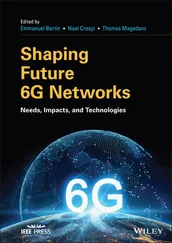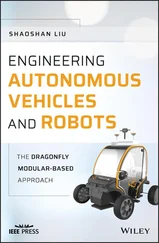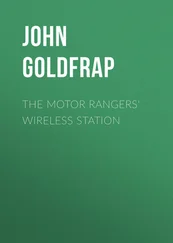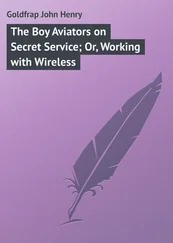1 Cover
2 Title Page Autonomous Airborne Wireless Networks Edited by Muhammad Ali Imran, Oluwakayode Onireti, Shuja Ansari, and Qammer H. Abbasi University of Glasgow, UK
3 Copyright
4 Editor Biographies
5 List of Contributors
6 1 Introduction
7 2 Channel Model for Airborne Networks 2.1 Introduction 2.2 UAV Classification 2.3 UAV‐Enabled Wireless Communication 2.4 Channel Modeling in UAV Communications 2.5 Key Research Challenges of UAV‐Enabled Wireless Network 2.6 Conclusion Bibliography
8 3 Ultra‐wideband Channel Measurements and Modeling for Unmanned Aerial Vehicle‐to‐Wearables (UAV2W) Systems 3.1 Introduction 3.2 Measurement Settings 3.3 UWB‐UAV2W Radio Channel Characterization 3.4 Statistical Analysis 3.5 Conclusion Bibliography Notes
9 4 A Cooperative Multiagent Approach for Optimal Drone Deployment Using Reinforcement Learning 4.1 Introduction 4.2 System Model 4.3 Reinforcement Learning Solution 4.4 Representative Simulation Results 4.5 Conclusions and Future Work Acknowledgments Bibliography
10 5 SWIPT‐PS Enabled Cache‐Aided Self‐Energized UAV for Cooperative Communication 5.1 Introduction 5.2 System Model 5.3 Optimization Problem Formulation 5.4 Numerical Simulation Results 5.5 Conclusion Acknowledgments Appendix 5.A Proof of Optimal Solutions Obtained in (P1) Bibliography Notes
11 6 Performance of mmWave UAV‐Assisted 5G Hybrid Heterogeneous Networks 6.1 The Significance of UAV Deployment 6.2 Contribution 6.3 The Potential of mmWave and THz Communication 6.4 Challenges and Applications 6.5 Fronthaul Connectivity using UAVs 6.6 Communication Model 6.7 Association of SCBs with UAVs 6.8 Results and Discussions 6.9 Conclusion Bibliography Notes
12 7 UAV‐Enabled Cooperative Jamming for Physical Layer Security in Cognitive Radio Network 7.1 Introduction 7.2 System Model 7.3 Proposed Algorithm 7.4 Numerical Results 7.5 Conclusion Bibliography
13 8 IRS‐Assisted Localization for Airborne Mobile Networks 8.1 Introduction 8.2 Intelligent Reflecting Surfaces in Airborne Networks 8.3 Localization Using IRS 8.4 Research Challenges 8.5 Summary and Conclusion Bibliography
14 9 Performance Analysis of UAV‐Enabled Disaster Recovery Networks 9.1 Introduction 9.2 UAV Networks 9.3 Benefits of UAV Networks 9.4 Design Consideration of UAV Networks 9.5 New Technology and Infrastructure Trends 9.6 Research Trends 9.7 Future Insights 9.8 Conclusion Bibliography
15 10 Network‐Assisted Unmanned Aerial Vehicle Communication for Smart Monitoring of Lockdown 10.1 Introduction 10.2 UAVs as Aerial Base Stations 10.3 UAV as Relays for Terrestrial Communication 10.4 Conclusion Bibliography Note
16 11 Unmanned Aerial Vehicles for Agriculture: an Overview of IoT‐Based Scenarios 11.1 Introduction 11.2 The Perspective of Research Projects 11.3 IoT Scenarios in Agriculture 11.4 Wireless Communication Protocols 11.5 Multi‐access Edge Computing and 5G Networks 11.6 Conclusion Bibliography Notes
17 12 Airborne Systems and Underwater Monitoring 12.1 Introduction 12.2 Automated Image Labeling 12.3 Water/Land Visual Differentiation 12.4 Offline Bathymetric Mapping 12.5 Online Bathymetric Mapping 12.6 Conclusion and Future Work Bibliography
18 13 Demystifying Futuristic Satellite Networks: Requirements, Security Threats, and Issues 13.1 Introduction 13.2 Inter‐Satellite and Deep Space Network 13.3 Security Requirements and Challenges in ISDSN 13.4 Conclusion Bibliography Notes
19 14 Conclusion 14.1 Future Hot Topics 14.2 Concluding Remarks
20 Index
21 End User License Agreement
1 Chapter 2 Table 2.1 Regulation for LAP deployment of UAVs in different countries. Table 2.2 Measurement campaigns to characterize the path loss and large‐scale... Table 2.3 Measured small‐scale fading of AG propagation in different environm...
2 Chapter 3 Table 3.1 The measurement apparatus with their specifications. Table 3.2 Path loss measurement and path loss exponent for nine different bod... Table 3.3 Combined path loss measurement and path loss exponent for four diff... Table 3.4 Path loss measurement and path loss exponent for four different bod... Table 3.5 Time dispersion analysis in the case of LoS for nine body locations... Table 3.6 Time dispersion analysis in the case of NLoS for four body location... Table 3.7 Path loss values in the indoor and outdoor environments for four po... Table 3.8 Delay analysis values in nanoseconds for two body locations conside... Table 3.9 AIC score for all the distributions considered for modeling the fad...
3 Chapter 4Table 4.1 State‐of‐the‐art UAV positioning solutions using RL.Table 4.2 Simulation parameters.
4 Chapter 5Table 5.1 Definitions of mathematical symbols and variables.Table 5.2 Rate at the users for different UAV's trajectories.
5 Chapter 6Table 6.1 Impact on the characteristics of signals at THz and mmWave frequenc...Table 6.2 Simulation parameters [2,39].
6 Chapter 7Table 7.1 Simulation parameters
7 Chapter 9Table 9.1 Critical review on state of the art.
8 Chapter 10Table 10.1 Fitting parameters for receiver threshold  dBm.Table 10.2 Fitting parameters for receiver threshold
dBm.Table 10.2 Fitting parameters for receiver threshold  dBm.Table 10.3 Fitting parameters for receiver threshold
dBm.Table 10.3 Fitting parameters for receiver threshold  dBm.Table 10.4 Fitting parameters for receiver threshold
dBm.Table 10.4 Fitting parameters for receiver threshold  dBm.Table 10.5 Fitting parameters for receiver threshold
dBm.Table 10.5 Fitting parameters for receiver threshold  dBm.Table 10.6 Fitting parameters for receiver threshold
dBm.Table 10.6 Fitting parameters for receiver threshold  dBm.Table 10.7 5G air interface simulation parameters.Table 10.8 Download maximum throughput.
dBm.Table 10.7 5G air interface simulation parameters.Table 10.8 Download maximum throughput.
9 Chapter 11Table 11.1 The most relevant EU‐funded R&I projects exploiting UAV technology...Table 11.2 Surveyed literature in the field of SF, especially considering the...Table 11.3 Agricultural scenarios covered by the described works and the use ...
10 Chapter 12Table 12.1 Automated point selection simulation resultsTable 12.2 Best case interpolation decision table
1 Chapter 2 Figure 2.1 Aerial user equipment and aerial base station. Figure 2.2 Air‐to‐ground propagation in UAV‐assisted cellular network. Figure 2.3 Multipath air‐to‐ground propagation in urban setting.
2 Chapter 3 Figure 3.1 The UWB measurement communication setup. Figure 3.2 The UWB antenna and the IRIS+ quadcopter used in the measurement ... Figure 3.3 The UWB antenna patch locations on the human body for the UWB mea... Figure 3.4 The sketch plan of the measurement campaign with the 10 distinct ... Figure 3.5 Different environments considered for the measurement campaign. (... Figure 3.6 Path loss factor determination from linear regression for a wirel... Figure 3.7 Averaged PDP at different distances. Figure 3.8 Normalized averaged path loss delay comparison. Figure 3.9 Statistical test (AIC) to determine the best distribution for fad... Figure 3.10 Empirical and predicted CDF for radio channel between forehead a...
3 Chapter 4Figure 4.1 Manhattan grid urban layout.Figure 4.2 UAV path loss in urban environment.Figure 4.3 MARL framework for multi‐drone networks.Figure 4.4 Available action sets. (a) Basic strategy action space. (b) All s...Figure 4.5 Basic strategy..Figure 4.6 ALL strategy.Figure 4.7 New strategy.Figure 4.8 User density areas. (a) Low density. (b) Medium density. (c) High...Figure 4.9 Single frequency: Number of users in outage. (a) Low density. (b)...Figure 4.10 Single frequency: Global system backhaul. (a) Low density. (b) M...Figure 4.11 Single frequency: Number of active drones. (a) Low density. (b) ...Figure 4.12 Three frequencies: Number of users in outage. (a) Low density. (...Figure 4.13 Three frequencies: Global system backhaul. (a) Low density. (b) ...Figure 4.14 Three frequencies: Number of active drones. (a) Low density. (b)...Figure 4.15 Six frequencies: Number of users in outage. (a) Low density. (b)...Figure 4.16 Six frequencies: Global system backhaul. (a) Low density. (b) Me...Figure 4.17 Six frequencies: Number of active drones. (a) Low density. (b) M...
Читать дальше
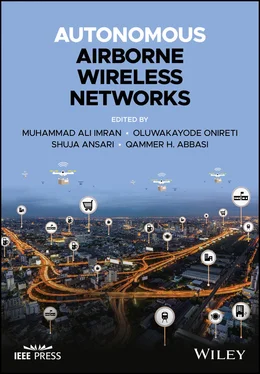
 dBm.Table 10.2 Fitting parameters for receiver threshold
dBm.Table 10.2 Fitting parameters for receiver threshold  dBm.Table 10.3 Fitting parameters for receiver threshold
dBm.Table 10.3 Fitting parameters for receiver threshold  dBm.Table 10.4 Fitting parameters for receiver threshold
dBm.Table 10.4 Fitting parameters for receiver threshold  dBm.Table 10.5 Fitting parameters for receiver threshold
dBm.Table 10.5 Fitting parameters for receiver threshold  dBm.Table 10.6 Fitting parameters for receiver threshold
dBm.Table 10.6 Fitting parameters for receiver threshold  dBm.Table 10.7 5G air interface simulation parameters.Table 10.8 Download maximum throughput.
dBm.Table 10.7 5G air interface simulation parameters.Table 10.8 Download maximum throughput.




